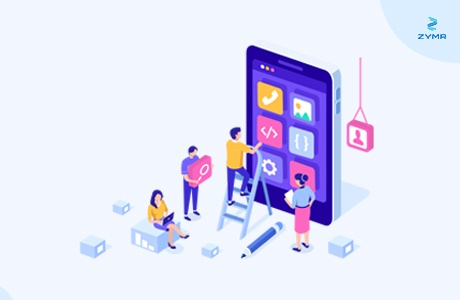With the emergence of millions of mobile apps, the chances are, if you have arrived with some idea that you think is unique, you’re probably mistaken. There is a high probability that this idea subsites in some shape or form on the app store — some of which are successful — while others not-so-much. So what does it take for an app to become a massive hit among users? Well, to begin with, it all usually comes down to one of the most significant aspects — user experience.
A mobile app user experience includes everything that affects the perception and interaction of a user with a product. The mobile usability commences and ends with the user, and it also works as the deciding factor for an app’s success. The difference between successful mobile apps and ones that fail in the market is the quality of user experience. Without a thorough apprehension of factors like in-app behavior patterns and psychological underpinnings of your target users, you won’t be able to create a mobile product that satisfies a central goal or surpasses expectations.
The user expectations have climbed higher with the advancement in technology. They require ease of use, faster loading time, ability to complete a specific task within a minimum number of actions possible, and so on. The transition from “this app looks worth a shot” to “OMG, this app is amazing” is a delicate process, which requires thoughtful attention. Throughout this post, we are going to shed some light on some of the elements, which offer an excellent user experience for mobile app users. Implementing these strategies into your mobile app development lifecycle will help achieve an optimal UX.
Efficient Onboarding Experience
User on-boarding is an imperative element of an app that bridges the distance between enticing the potential users to give your app a try and converting into invested users. The delivery of an excellent onboarding experience lays the foundation for attracting and retaining users. When dealt correctly, user onboarding not only cutbacks the abandonment rates but also assists in accelerating long-term success metrics like user lifetime value and user retention. You can have a tutorial to make it easier for the users to understand how your app works. Moreover, you can also minimize the number of steps required for account signup/creation and enable multiple registration options (i.e., Facebook or Google signup).
Keep Things Simple
The processing power of a human brain has a limit. Overwhelming your users with more information than necessary is likely to frustrate them and drive them away. A cluttered interface having too many images, texts, and buttons can make the screen appear complicated to the users. Because a mobile screen offers a limited space — you must focus on making the design as practical as you can, and only involve elements that are of an absolute significance and compulsion. If there exists a particular item that fails to support a user task — remove it.
Valuable Push Notifications
Push notifications aren’t a design element of an app. However, they certainly play a significant role in the overall user experience. Several notable surveys have stated that push notifications may sound annoying, but they’re the number one reason why users prefer installing mobile apps that offer this feature. Push notifications can help you enhance your app engagement. They need to be relevant, timely, and valuable to all the users. If you keep plaguing your users continuously with irrelevant notifications, it could lead them to uninstall your app.
Minimize Search Effort
Help your users discover what they need quickly with minimum search efforts. This approach will satisfy their needs and end up driving higher conversion rates. You can integrate search strategies like keyword search, barcode scanning, filters, etc., in your app to guide your users directly to what they are looking for.
Reduce User Input
Long forms with unnecessary fields aren’t ideal, especially on mobile screens. If your mobile app needs form input from the users, make sure you’re keeping the required information fields to a minimum. More prolonged, complicated forms may end up putting the users off while filling it. You can integrate tools like Place Autocomplete Address Form that combines address and geo-location prefilling to offer accurate suggestions based on the exact location of the user. This type of format helps reduce errors, and while these may look relatively minor, they’re fantastic to improve the ease of use.
Trustworthiness And Security
We always download apps only to be overwhelmed by a long list of security permissions that we need to accept before we can use them. Often the consent includes asking for credit card information when there is no e-commerce function integrated to the specific app. Similarly, there are times when we encounter apps asking for access to the photo gallery with no explicit requirement for it. Such instances can directly lead to trust and security issues that can affect the overall brand loyalty. Make sure your app asks for relevant permissions to make it comfortable and safe for users.
CTV Growth Guide: A must-read for performance marketers
Whether you’re looking to boost brand awareness or drive user acquisition, this guide has you covered. Learn how to leverage CTV for both brand awareness and performance-driven campaigns and get actionable insights to optimize your strategies.
Download nowFinal Thoughts
Creating an excellent UX is no easy task as it includes several elements, which operate systematically to meet users and business objectives. Optimal user experience needs an innovative shift far away from conventional approaches towards a mobile-centric way of thinking. Taking the considerations mentioned above can help you design the ultimate mobile user experience within the context of a UX-centric plan. Zymr can help you accelerate your business growth with end-to-end mobile application development for corporate and consumer-facing environments. We also craft simple, efficient, powerful, and intuitive user experiences based on the Human Interface Guidelines and Behavioral Patterns.
Contact us at hello@zymr.com to discuss your requirements.











